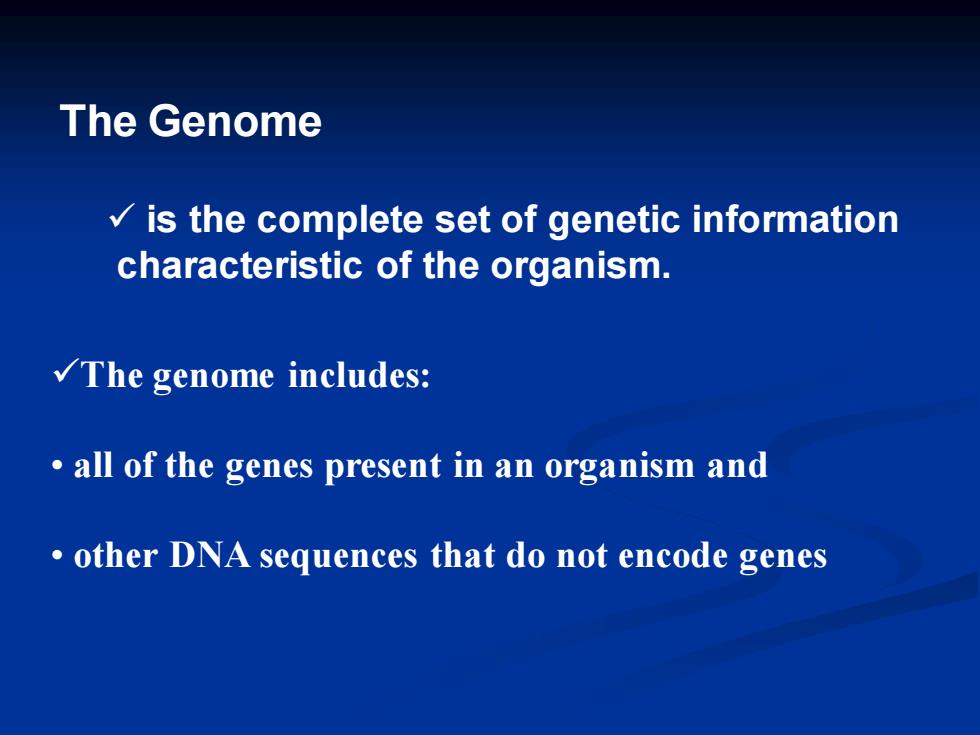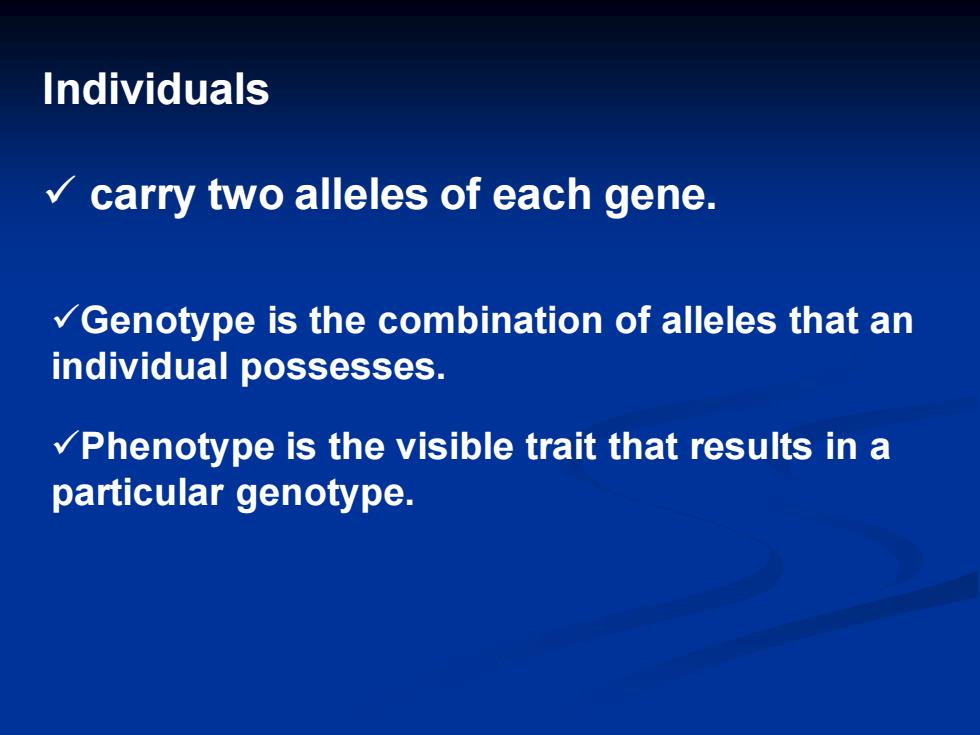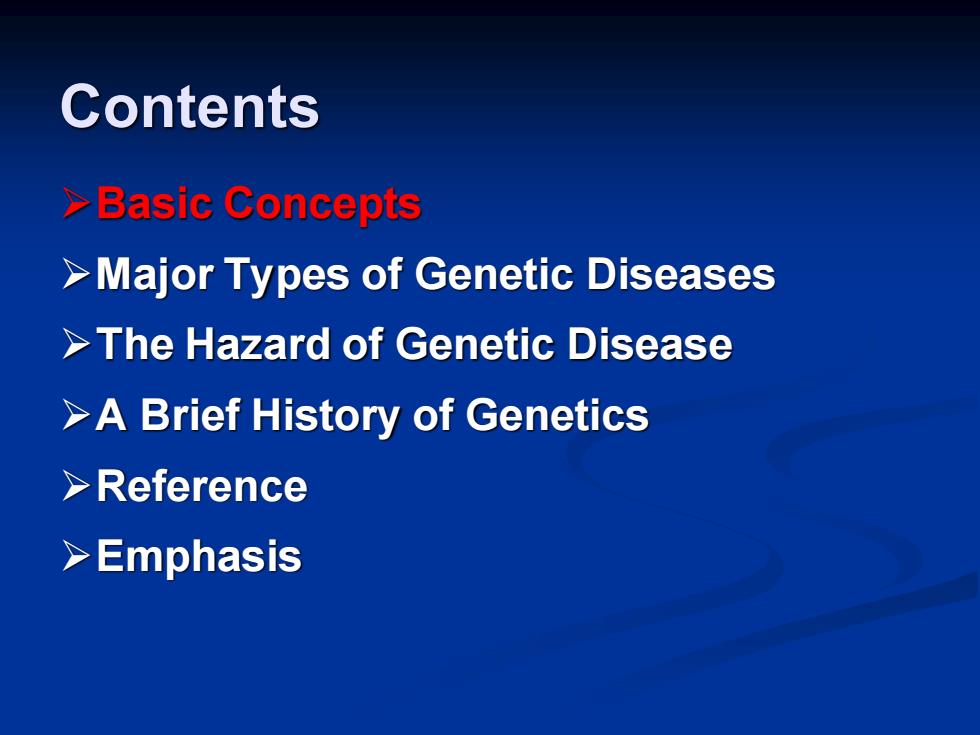
The Genome is the complete set of genetic information characteristic of the organism. √The genome includes: all of the genes present in an organism and other DNA sequences that do not encode genes
✓ is the complete set of genetic information characteristic of the organism. ✓The genome includes: • all of the genes present in an organism and • other DNA sequences that do not encode genes The Genome

The human genome consists of 3 billion base pairs of DNA includes 28,000 to 34,000 genes is organized as 23 pairs of chromosomes
The human genome ✓ consists of 3 billion base pairs of DNA ✓ includes 28,000 to 34,000 genes ✓ is organized as 23 pairs of chromosomes

Individuals carry two alleles of each gene. Genotype is the combination of alleles that an individual possesses. Phenotype is the visible trait that results in a particular genotype
Individuals ✓ carry two alleles of each gene. ✓Genotype is the combination of alleles that an individual possesses. ✓Phenotype is the visible trait that results in a particular genotype

A population is a group of interbreeding individuals who possess a particular collection of alleles or gene pool
A population ✓ is a group of interbreeding individuals who possess a particular collection of alleles or gene pool

Contents >Basic Concepts >Major Types of Genetic Diseases >The Hazard of Genetic Disease >A Brief History of Genetics >Reference >Emphasis
Contents ➢Basic Concepts ➢Major Types of Genetic Diseases ➢The Hazard of Genetic Disease ➢A Brief History of Genetics ➢Reference ➢Emphasis